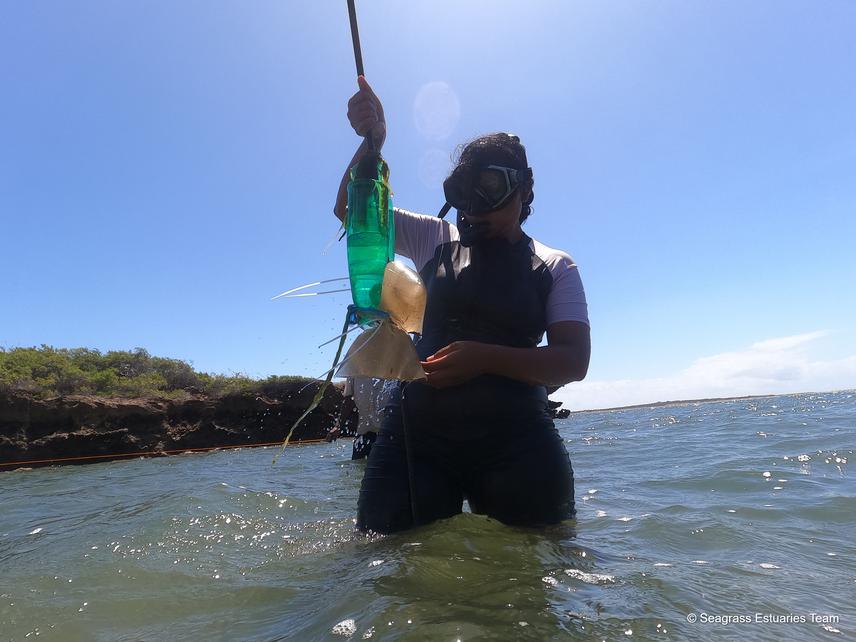Tsiaranto Fanoro Felan-Ratsimba
This study investigates the impact of sedimentation on seagrass species diversity near estuaries in Madagascar. By studying seagrass populations across multiple locations and different climate regimes, the research aims to gain a comprehensive understanding of the issue amidst changing climate conditions.
The primary goal is to collect data that can inform restoration actions and climate change adaptation strategies. Identifying resilient species to sedimentation serves as a valuable guidance for restoration projects. Additionally, the study seeks to develop a vulnerability index for seagrass communities, helping to predict their response to future environmental changes.

Retrieval of a sediment trap from the estuary floor in Irodo, Antsiranana II, Madagascar, to monitor and analyze sedimentation in seagrass meadows. ©Seagrass Estuaries Team.
This study employs a mixed-method approach that combines ecological observations with input from local communities. We conduct field studies to observe seagrass populations performance and data on sedimentation level. We also engage with local communities to gather information on their observations and experiences with sedimentation and seagrass health. With the integration of scientific data with local knowledge, the study aims to produce more accurate and actionable results on restoration ecology and conservation.
For restoration, the findings will advise on which species fit for the location, enhancing success rates and conserving resources in terms of time and finances. Similarly, for conservation, the results of this study can inform policy decisions and management strategies aimed at preserving coastal ecosystems and enhancing resilience to climate change. By identifying tolerant species and developing a vulnerability index, which is the next goal after this study, conservation practitioners and policymakers can prioritize areas for conservation efforts and allocate resources effectively. Moreover, the integration of local knowledge into ecological research not only enhances the accuracy of scientific assessments but also fosters community engagement in any upcoming activities for conservation or and restoration.
In conclusion, the approach aims to serve both conservation practitioners, policymakers, and researchers alike, contributing to effective and sustainable management of coastal ecosystems in Madagascar and beyond.